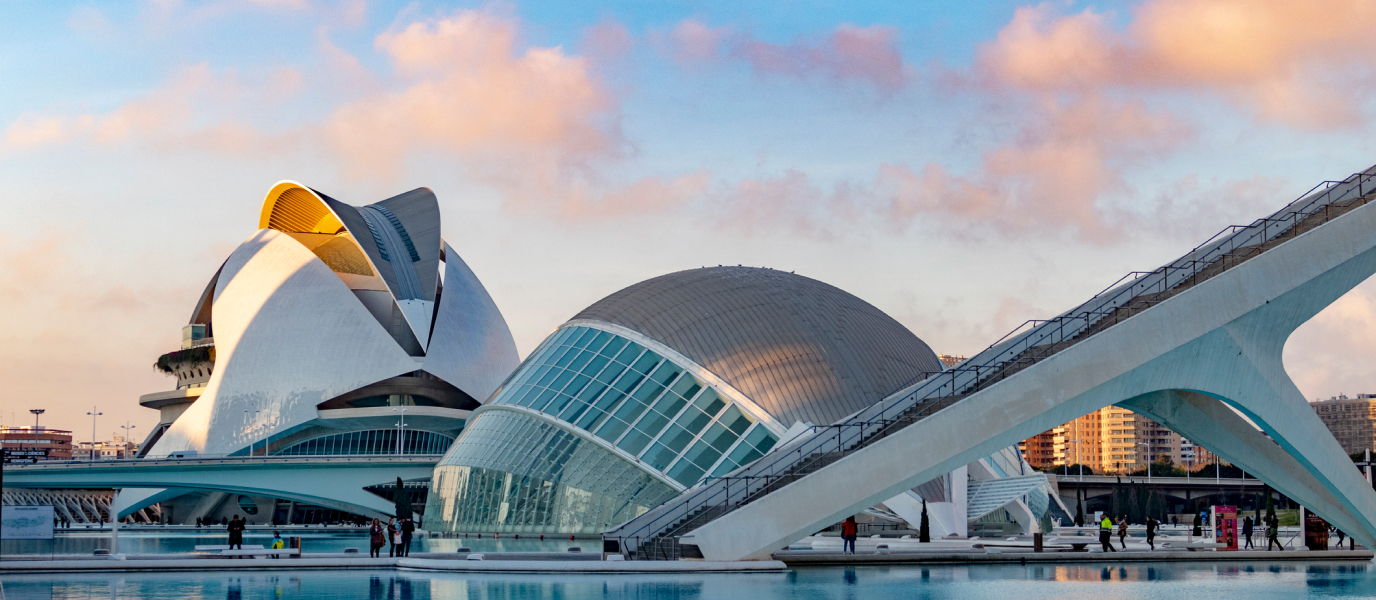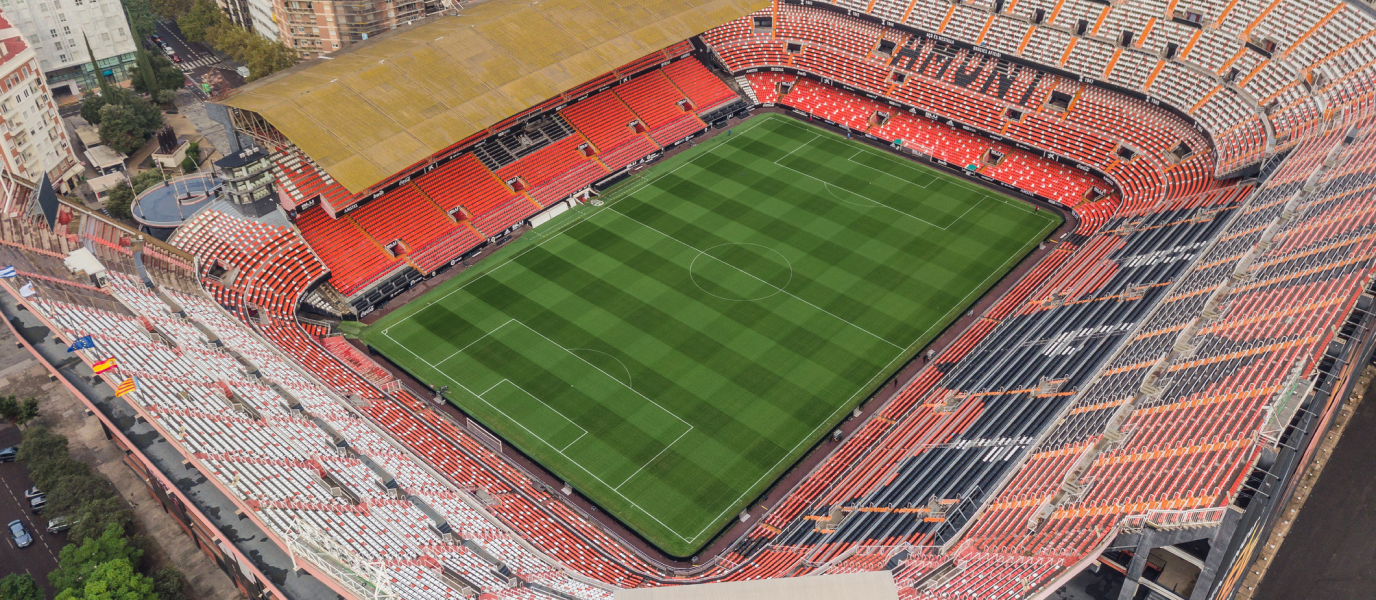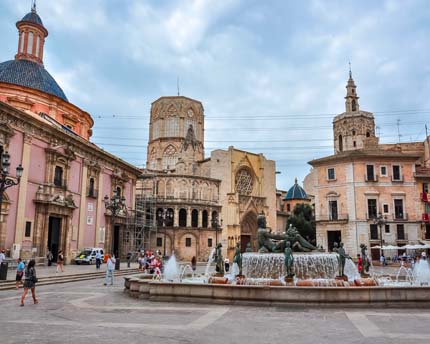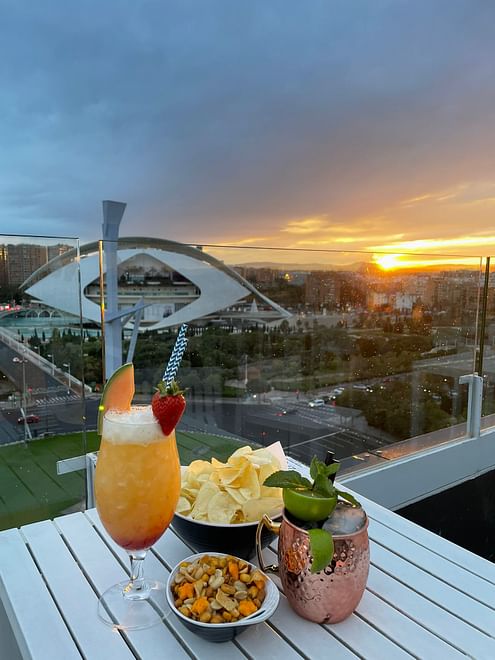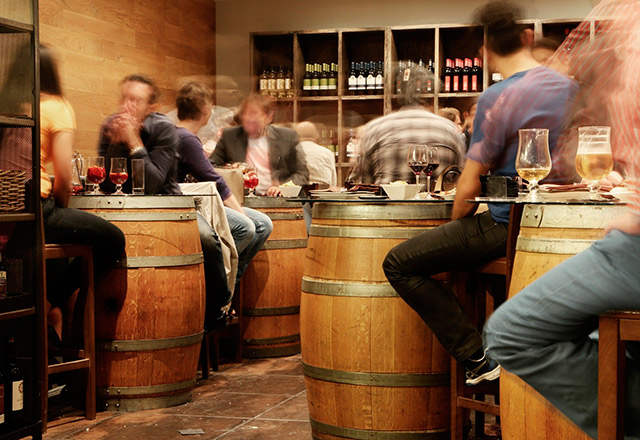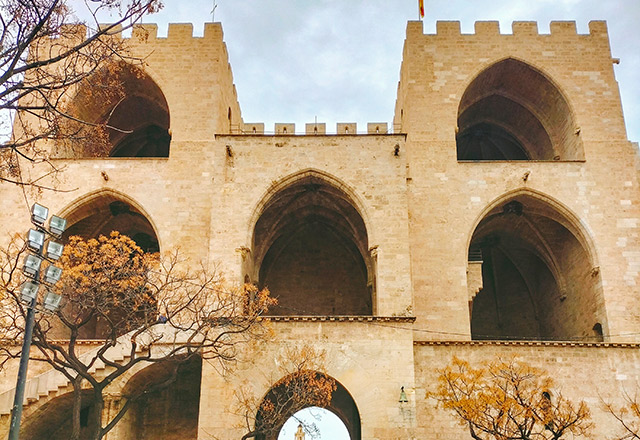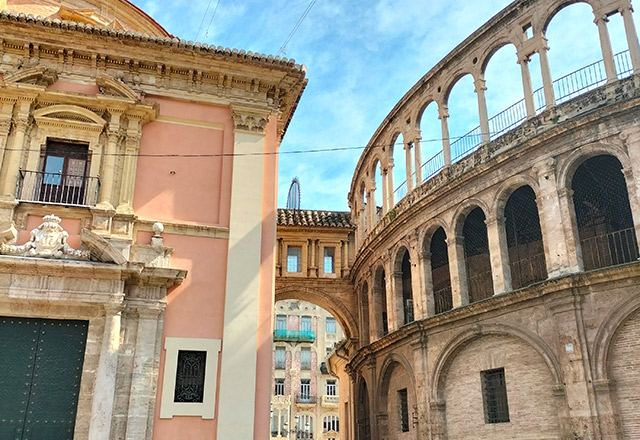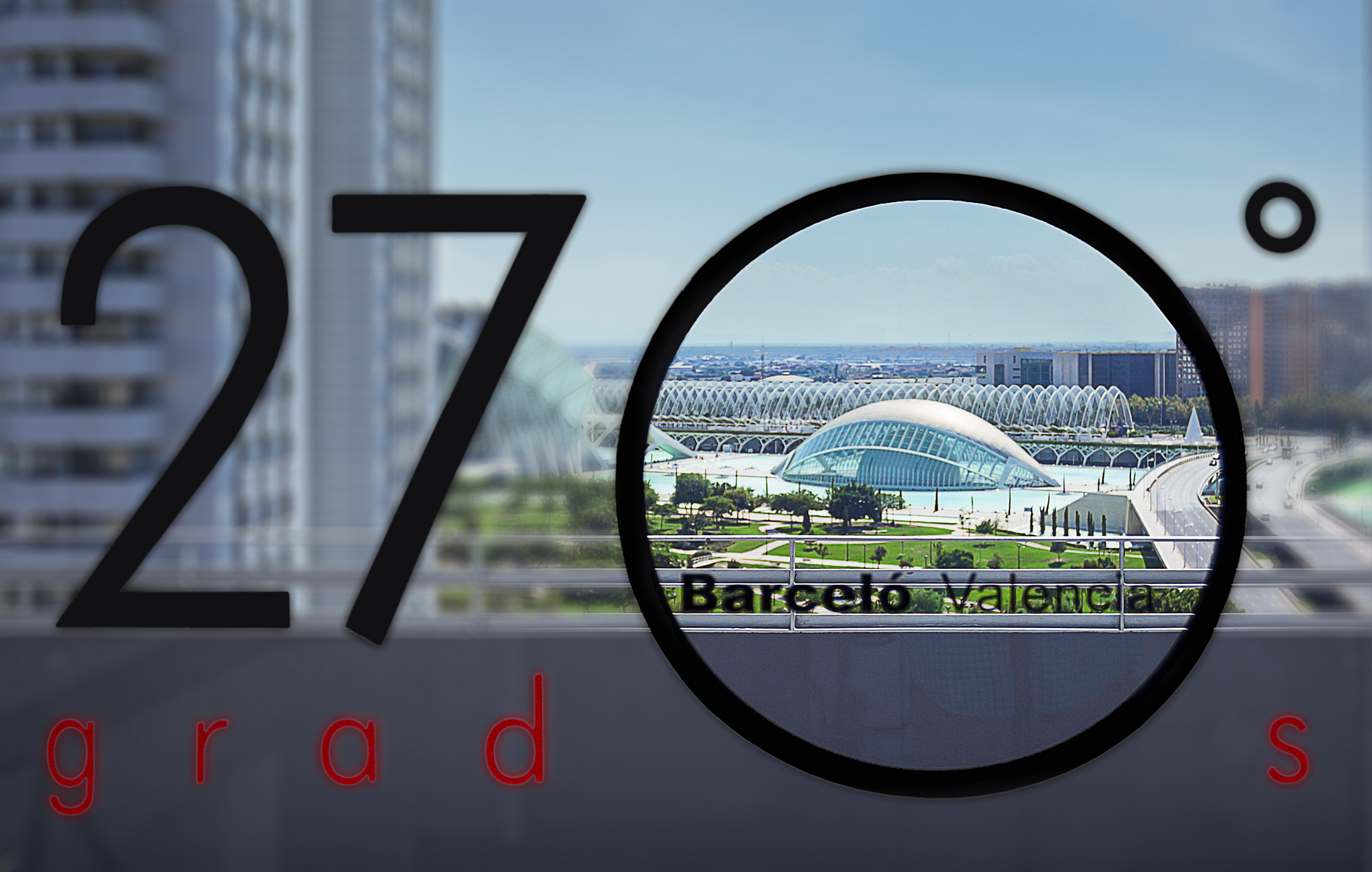Every Thursday, Tribunal de les Aigües de València [Water Tribunal], a legal institution that has been operating since before the Reconquista, meets to the right of the arches of the Valencia Cathedral’s Door of the Apostles leading to Plaça de la Mare de Déu. The eight members are dressed in the loose black shirts traditionally worn by Valencian farmers. There is a representative from each of the main irrigation canals that water the fields surrounding the city.
During the period when Valencia was under Moorish rule, an irrigation network was built in the fertile region, leading to the creation of the Water Tribunal of the Plain of Valencia to regulate the water system. This complex system of acequias madre (main channels) uses sequiols or smaller irrigation ditches to divert water from the Túria river. Following the Reconquista, King James I maintained and perfected the model that remains intact to date. There are currently eight irrigation channels. Quart, Benáncher and Fitanar, Mistala-Chirivella, Favara and Rovella are on the right bank of the Túria river, and Tormos, Mestalla and Rascaña are on the left bank. Through the use of 138 rows—that vary according to the river’s flow at the point where the irrigation channels begin—water is distributed to ensure it reaches all of them. The Water Tribunal is so effective that it has never been necessary to turn to the regular legal system to resolve water distribution disputes.
The uniqueness and sound operation of this thousand-year-old institution makes it one of the most valuable assets of Valencia’s cultural legacy. In 2009, it was inscribed on the Representative List of the Intangible Cultural Heritage of Humanity. What is considered to be Europe’s oldest legal institution—its earliest sessions date back to the late ninth century—meets at 12:00 PM. This tribunal settles disputes arising from the distribution of irrigation water, and proceedings take place quickly, orally and in Valencian. The decisions are executive and not subject to appeal. Fines are expressed in lluires, a local currency that is no longer in use.
A Water Tribunal session
The clock strikes noon and the eight members of the tribunal take a seat. The bailiff then calls for cases from each of the canals as to the inappropriate use of water. If an issue is presented, the defendant must also be present in court—for example, someone who uses an irrigation channel, one of the eight representatives or a third party may have done something that is not permitted with the distribution of water. Defendants have up to three opportunities to appear in court once a claim has been accepted, and on the third occasion they are judged by default. The summons are done in the same order in which the irrigation channels take water from the river, starting with Quart and ending with Rovella. The corresponding channel guard sets out the case and concludes with the words, ‘Es quant tenia que dir’, at which point it is the defendant’s turn to speak.
Claims are usually about damaged or dirty channels, or minor unapproved water diversions. Disputes are resolved without signing any documents; instead, proceedings are done orally, in front of the president and the bailiff, who is also called the Guarda Major [Major Guard]. Witnesses or a visual inspection may be proposed on occasion.
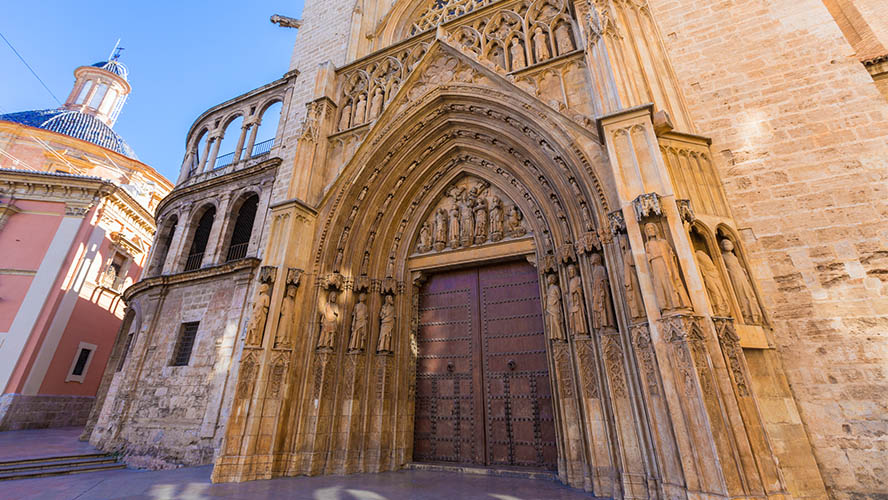
The representative or trustee of the irrigation channel involved does not take part in the deliberation so as to guarantee impartiality. As a rule, sentences are proposed by the trustees of the irrigation channels located on the opposite side as the defendant. In other words, if the defendant lies on the right bank of the river, the sentence is proposed by those on the left bank along the same stretch of the river. Irrigation channel representatives are democratically selected every two years by the other users.
Visitors will be lucky to witness a session involving sentences and fines because on certain Thursdays, no cases arise. If you decide to attend a session, keep in mind that groups gather nearby for the same purpose and space is limited, so be sure to arrive early to grab a good spot.
When the session ends, the representatives make their way to the Casa Vestuari across from the Door of the Apostles to discuss joint matters, and the Chirivella trustee joins them. This is the time to discuss the river’s flow and to decide the degree to which the irrigation channels should be opened. At this point, water can also be requested from the old royal irrigation channel (Acequia de Moncada), based on historic rights granted by King James II in 1321.
Following the first Water Law, it was decided that a records book should be used to document key information from every dispute, including the irrigation channel in question, the defendant and the complainant, the reason for the complaint, the decision and the date. However, this has not affected the speed at which cases and sentences are handled, and the process remains speedy and useful for trustees, who cannot get involved in lengthy bureaucratic disputes as their crops are affected.
Major Guard
The bailiff’s role is of utmost importance. It was historically referred to as the Major Guard and is the true atandador, or the person in charge of distributing water and raising the lock-gates. In addition to wearing specific attire, the bailiff carries a brass spear with two prongs, one of them curved, which was used to remove the boards from the slots in the irrigation channel separators. This instrument was also very useful in releasing blockages from the irrigation channels or retrieving boards that may have floated downstream.
The Fountain at Plaça de la Mare de Déu
Plaça de la Mare de Déu is home to a large fountain that symbolises this entire process. It features a large statue of a man reclining over a cornucopia, representing the Túria river and the wealth of its water for Valencia’s meadows. He is surrounded by eight women holding pitchers from which water pours into the fountain. They represent the eight irrigation channels that provide water from the river to Valencia’s fields. The fountain was created by Manuel Silvestre Montesinos and inaugurated in 1976.




































































